Tag: Veritas Vineyards and Winery
Five Vintages of Cab Franc at Gadino Cellars
As I’ve said before, I believe that Cabernet Franc is Virginia’s signature red grape, even if Petit Verdot iscoming on strong. It is more cold-hardy than Merlot or Cabernet Sauvignon, and it ripens earlier. That’s important in Virginia, which can be prone to early frost, Fall rains, and the occasional harsh winter. And Cab Franc is a wonderful grape on its own. It has softer tannins than Cab Sauv, and while it might not be quite as age-worthy, wines today are being made (and
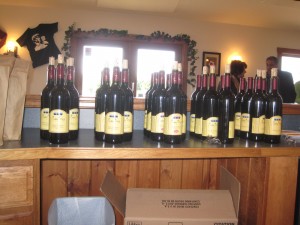
- Five Vintages of Cab Franc waiting to be poured, along with a mystery wine, hidden in brown bags for blind tasting
purchased) for early drinking, not for years in the cellar. Cab Franc will age, of course, but it is also more accessible when young than the more tannic reds. And Cab Franc can be used on its own or as a blend to make wines with great complexity, as the great St. Emilion blend, Cheval Blanc, demonstrates.
Cab Frank is particularly important to my wife, the Vineyard Goddess, and me, because it’s one of three grapes we will be planting this Spring, the other two being Petit Verdot and Viognier. (We had hoped to plant Petit Manseng as well, but couldn’t find the certified vines we wanted.)
So, I was thrilled to have the opportunity Saturday to participate in a vertical tasting of Cab Francs at Gadino Cellars in Washington, VA (Rappahannock County). We tasted wines from 2005, 2006, 2007, 2008, and 2009, plus a barrel sample of the 2011. The Gadinos threw in a mystery wine, which we tasted blind. More on the mystery wine later. Continue Reading–>
The Year of the Sorting Table
Following up on my last blog, which concerned Cab Franc, Tim Mondavi, and the 2011 vintage in Virginia, among other things, I just read Emily Pelton’s article on the 2011 harvest in Grape Press, the publication of the Virginia Vineyards Association, and I am somewhat more hopeful about this vintage.
First, some introductions. Emily Pelton is the winemaker extraordinaire at her family’s
vineyard in Nelson County, Veritas Vineyard and Winery. And the Virginia Vineyards Association is the indispensable organization for anyone in the Commonwealth interested in viticulture and winemaking. The November issue of the Grape Press was one of the best I've read. In fact, I think I read every word, from beginning to end, and it was all good.
In any event, I spent part of my last post lamenting the difficult weather conditions, particularly the abundant rain that created all kinds of problems in the vineyard. One of the difficult decisions that winemakers and vineyard managers make as harvest approaches is how willinging they are to gamble on the weather. If rain is in the forecast, do you hold out a little longer, hoping the grapes will achieve the perfect balance of sugar and acidity, or do you pick early, sacrificing a bit of brix for the certainty that you will at least have a harvest? Continue Reading–>
WBC11 – A Conference for Wine Bloggers
I’ve been meaning for a week now to write something about the Wine Bloggers Conference (WBC11) that was held in Charlottesville July 22-24. It was a well-planned, well-executed conference, but what I think was most important about it for the purpose of this blog is the way it showcased Virginia’s wine industry. Some 325 bloggers from around the country attended, and they were all exposed in a variety of ways to Virginia wine.
While I was gathering my thoughts, I had occasion to read two really terrific posts from Frank Morgan on his blog, "Drink What You Like." I started to respond to the post, and my piece turned out to be too long for a comment – probably too long for a blog post, for that matter – so I decided to submit a trimmed-back version to his blog and run the extended piece here. If you haven’t yet seen Drink What You Like, trust me, it’s well worth a visit.
What’s great about these two posts (A View from the Punt, I and II) is the perspective it provides from “the other side of the bottle” – the views of those who were pouring their wines at this conference. I had actually been wondering what the winemakers, vineyard managers, marketing directors and others who poured during the conference thought about the event and about the bloggers. They pour (sorry for the pun) their lives into their wines, then pour the wines for people who sniff and swirl it for a few moments before rendering judgments that can be generous in their praise or critical to the point of being mean-spirited. Continue Reading–>
A Trio of Virginia Wineries
I'm planning to add some reviews of the wineries I like, but that will take a bit more time than I have today. So, for now, I'm just going to offer a list of three wineries in the Monticello AVA that I am particularly fond of. And there is a theme here: these are the three wineries who came together to make a wine they named (appropriately enough) "3."
Emily Pelton of Veritas Vineyards stands behind bottles of "3" wine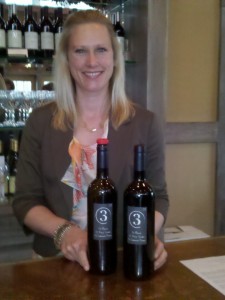
Each of the three contributed one of the varietals to the blend. Pollak Vineyards provided the Petit Verdot, Veritas Vineyard and Winery supplied the Cab Franc, and King Family Vineyards contributed the Merlot grapes. In theory, they planned to blend one third each of the grapes, but in practice, I think they realized that a blend required some judgment, and would likely end up being something other than one-third each. When blending wines, as I learned from King Family winemaker Matthieu Finot, you spend a lot of time experimenting and tasting. In this particular blend, I'm guessing that the Petit Verdot was very powerful, and they may have decided to use less of it and more of either of the other two grapes.
No matter. The wine was fabulous, and since they only made 150 cases, it sold out quickly. Each customer at Veritas was limited to three bottles at $33.33 each — yes, they carried the 3 theme pretty far — and I personally think this one will age quite well. So my three bottles are stored in my EuroCave wine celler, waiting for that perfect moment in the near future when they will achieve perfection.

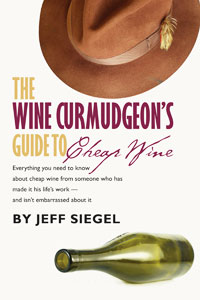
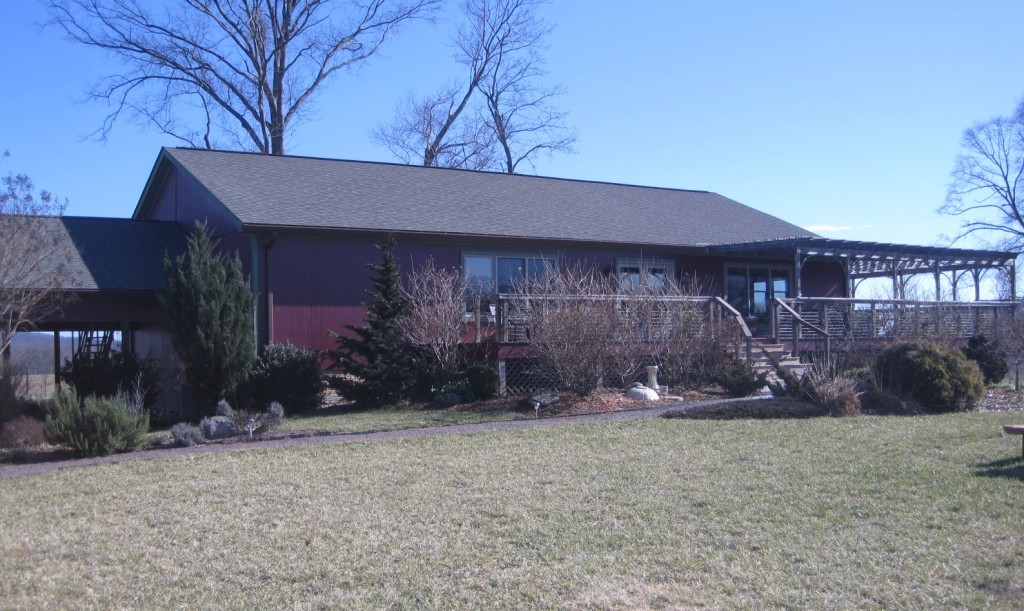
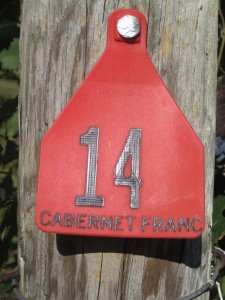
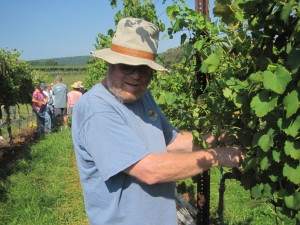
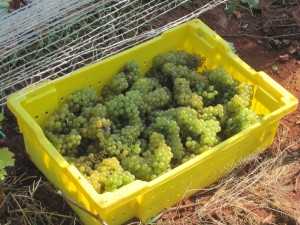
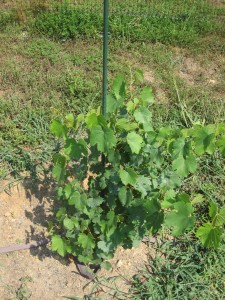
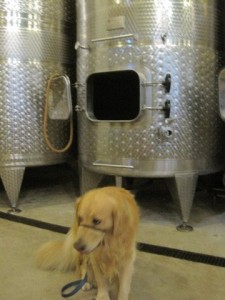


Recent Comments